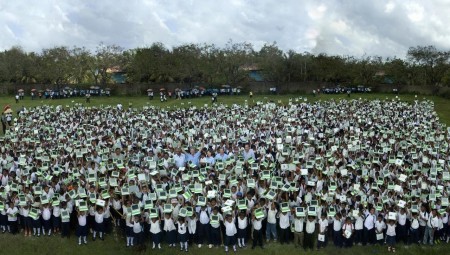Peru’s president Alan Garcia today committed to expanding their national program, the largest in the world, including developing national facilities for manufacturing / assembling laptops in-country. They will distribute their 1 millionth XO by the end of the year, reaching students in 100% of the country’s public primary schools, and 15 percent of all registered public school students. Some of these schools will get XO-1.75s, and 20,000 schools will get additional LEGO WeDo kits for use in class robotics programs. The XO-1.75 will use a Marvell Armada 600 ARM chip, lowering power consumption to make it the most energy efficient laptop around.
Rodrigo Arboleda said of the latest announcement: “Being the largest deployment worldwide, Peru is an outstanding example of OLPC. We hope to see other countries establish manufacturing facilities of the scale and magnitude of Peru’s. Local manufacturing of XO laptops will enable Peru both to transform education and to make important investments in its economy.”
Peru is continuing its efforts to build software, content, and ideas for constructionist class work. Through their ongoing partnership with LEGO Education, they will finish distributing 92,000 LEGO WeDo kits to OLPC classrooms in Peru, and will develop related robotics and programming curriculum for younger students.
Â
And the Peru Ministry of Education continues to invest in developing new Sugar applications and learning games for their own schools and others, assisted by OLPC’s global volunteer community (eg. Somos Azúcar) finishing translations of Sugar into Aymara and Quechua, and translating a teacher’s curriculum guide — most recently into French for schools in Madagascar.
I hope to get an update from some of these devs at the upcoming eduJAM! summit in Uruguay.

